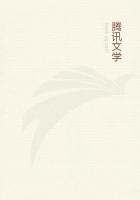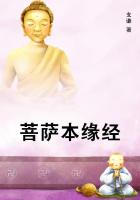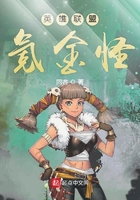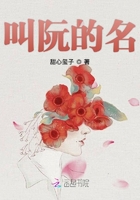"Item, another packet sealed with six different seals, on which is a similar inscription, in which are found three parcels, one containing half an ounce of sublimate, the second 2 1/4 ozs.of Roman vitriol, and the third some calcined prepared vitriol.In the box was found a large square phial, one pint in capacity, full of a clear liquid, which was looked at by M.Moreau, the doctor; he, however, could not tell its nature until it was tested.
"Item, another phial, with half a pint of clear liquid with a white sediment, about which Moreau said the same thing as before.
"Item, a small earthenware pot containing two or three lumps of prepared opium.
"Item, a folded paper containing two drachms of corrosive sublimate powdered.
"Next, a little box containing a sort of stone known as infernal stone.
"Next, a paper containing one ounce of opium.
"Next, a piece of pure antimony weighing three ounces.
"Next, a packet of powder on which was written: 'To check the flow of blood.' Moreau said that it was quince flower and quince buds dried.
"Item, a pack sealed with six seals, on which was written, 'Papers to be burnt in case of death.' In this twenty-four letters were found, said to have been written by the Marquise de Brinvilliers.
"Item, another packet sealed with six seals, on which a similar inscription was written.In this were twenty-seven pieces of paper on each of which was written: 'Sundry curious secrets.'
"Item, another packet with six more seals, on which a similar inscription was written.In this were found seventy-five livres, addressed to different persons.Besides all these, in the box there were two bonds, one from the marquise for 30,000, and one from Penautier for 10,000 francs, their dates corresponding to the time of the deaths of M.d'Aubray and the Sieur de St.Laurent."The difference in the amount shows that Sainte-Croix had a tariff, and that parricide was more expensive than ****** assassination.
Thus in his death did Sainte-Croix bequeath the poisons to his mistress and his friend; not content with his own crimes in the past, he wished to be their accomplice in the future.
The first business of the officials was to submit the different substances to analysis, and to experiment with them on animals.
The report follows of Guy Simon, an apothecary, who was charged to undertake the analysis and the experiments:
"This artificial poison reveals its nature on examination.It is so disguised that one fails to recognise it, so subtle that it deceives the scientific, so elusive that it escapes the doctor's eye:
experiments seem to be at fault with this poison, rules useless, aphorisms ridiculous.The surest experiments are made by the use of the elements or upon animals.In water, ordinary poison falls by its own weight.The water is superior, the poison obeys, falls downwards, and takes the lower place.
"The trial by fire is no less certain: the fire evaporates and disperses all that is innocent and pure, leaving only acrid and sour matter which resists its influence.The effect produced by poisons on animals is still more plain to see: its malignity extends to every part that it reaches, and all that it touches is vitiated; it burns and scorches all the inner parts with a strange, irresistible fire.
"The poison employed by Sainte-Croix has been tried in all the ways, and can defy every experiment.This poison floats in water, it is the superior, and the water obeys it; it escapes in the trial by fire, leaving behind only innocent deposits; in animals it is so skilfully concealed that no one could detect it; all parts of the animal remain healthy and active; even while it is spreading the cause of death, this artificial poison leaves behind the marks and appearance of life.Every sort of experiment has been tried.The first was to pour out several drops of the liquid found into oil of tartar and sea water, and nothing was precipitated into the vessels used; the second was to pour the same liquid into a sanded vessel, and at the bottom there was found nothing acrid or acid to the tongue, scarcely any stains; the third experiment was tried upon an Indian fowl, a pigeon, a dog, and some other animals, which died soon after.When they were opened, however, nothing was found but a little coagulated blood in the ventricle of the heart.Another experiment was giving a white powder to a cat, in a morsel of mutton.
The cat vomited for half an hour, and was found dead the next day, but when opened no part of it was found to be affected by the poison.
A second trial of the same poison was made upon a pigeon, which soon died.When opened, nothing peculiar was found except a little reddish water in the stomach."These experiments proved that Sainte-Croix was a learned chemist, and suggested the idea that he did not employ his art for nothing;everybody recalled the sudden, unexpected deaths that had occurred, and the bonds from the marquise and from Penautier looked like blood-money.As one of these two was absent, and the other so powerful and rich that they dared not arrest him without proofs, attention was now paid to the objection put in by Lachaussee.
It was said in the objection that Lachaussee had spent seven years in the service of Sainte-Croix, so he could not have considered the time he had passed with the d'Aubrays as an interruption to this service.
The bag containing the thousand pistoles and the three bonds for a hundred livres had been found in the place indicated; thus Lachaussee had a thorough knowledge of this closet: if he knew the closet, he would know about the box; if he knew about the box, he could not be an innocent man.This was enough to induce Madame Mangot de Villarceaux, the lieutenant's widow, to lodge an accusation against him, and in consequence a writ was issued against Lachaussee, and he was arrested.

